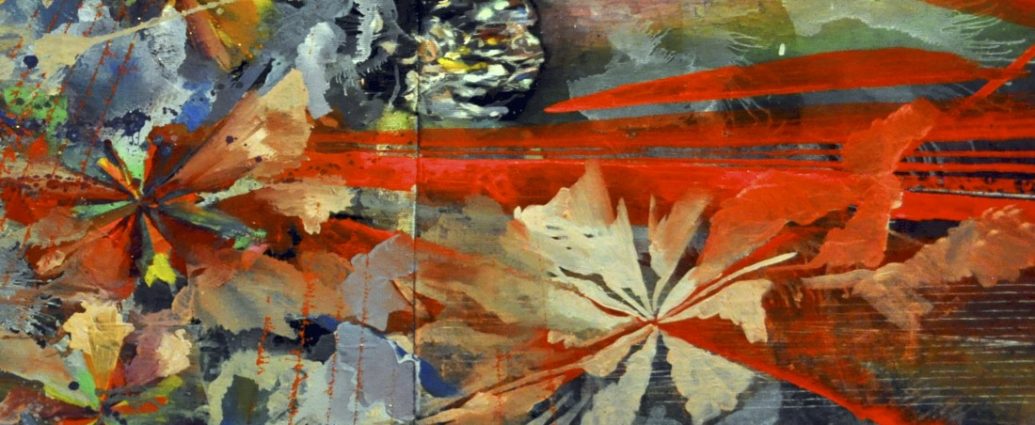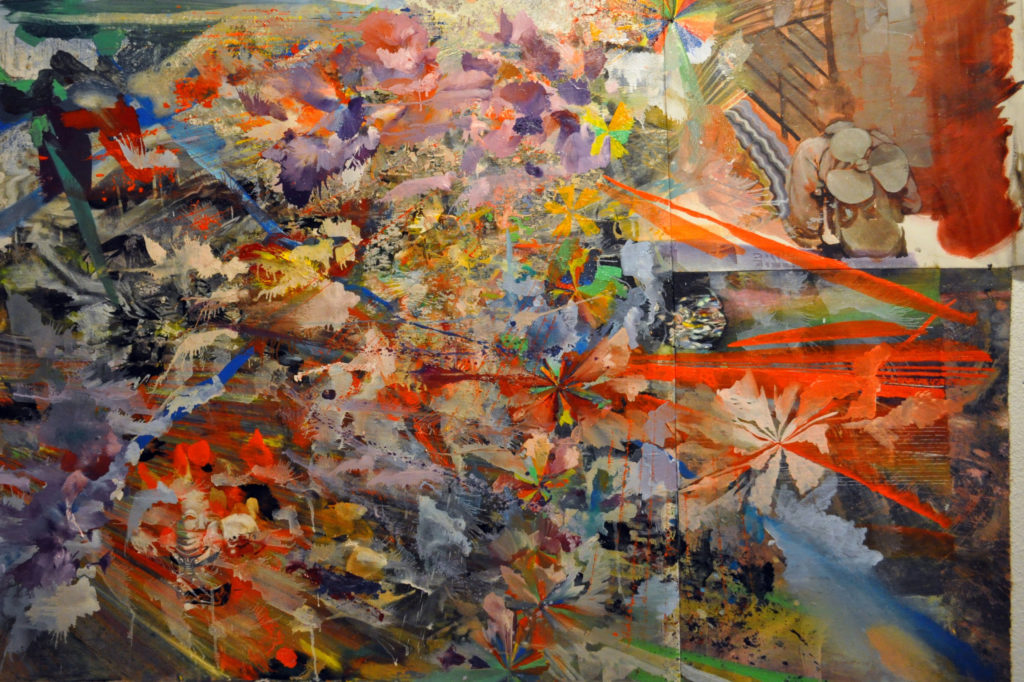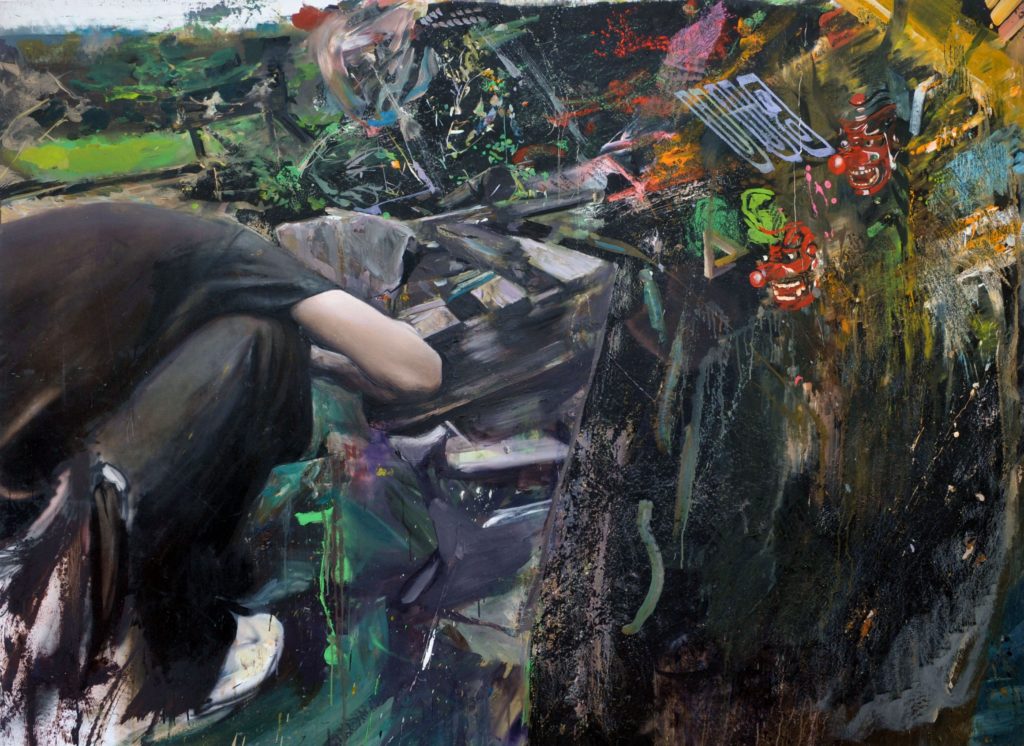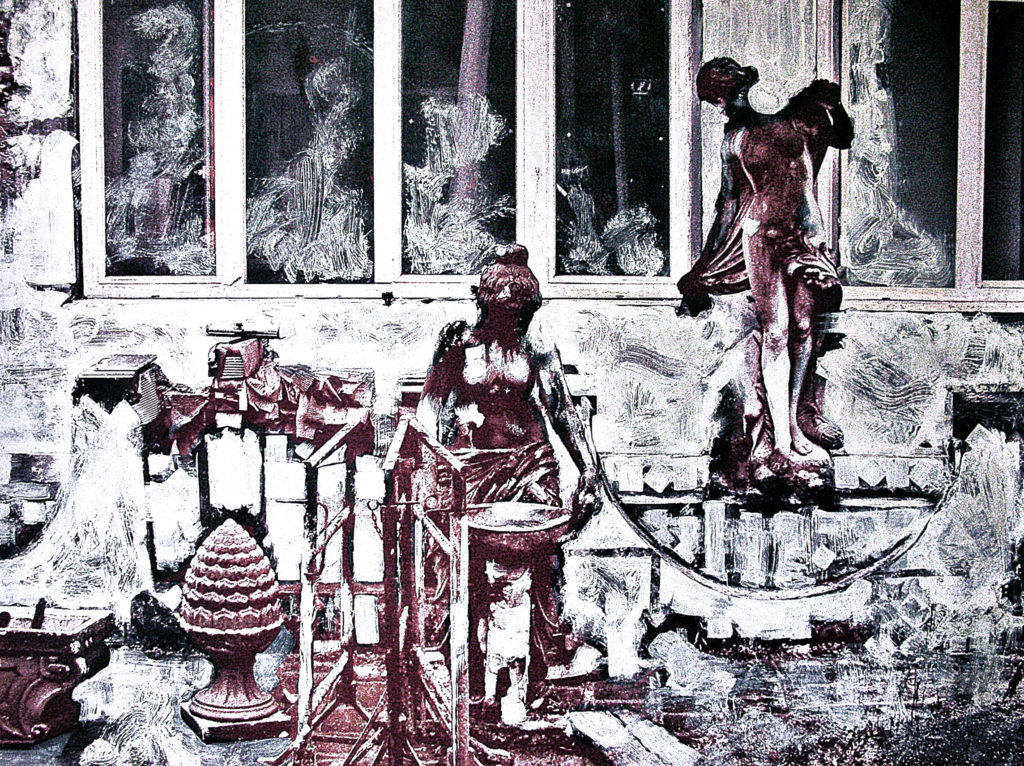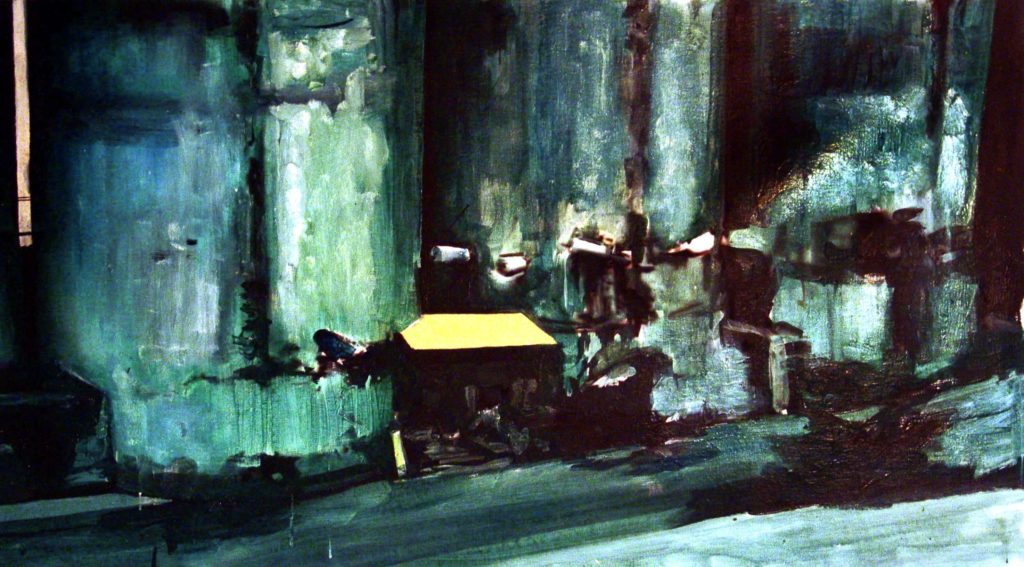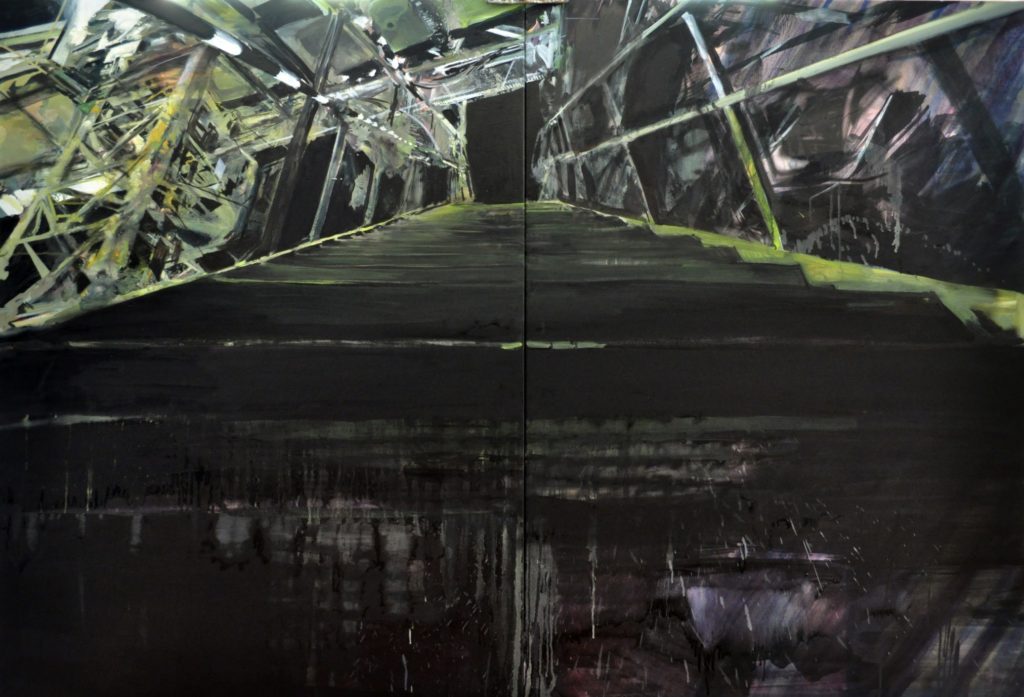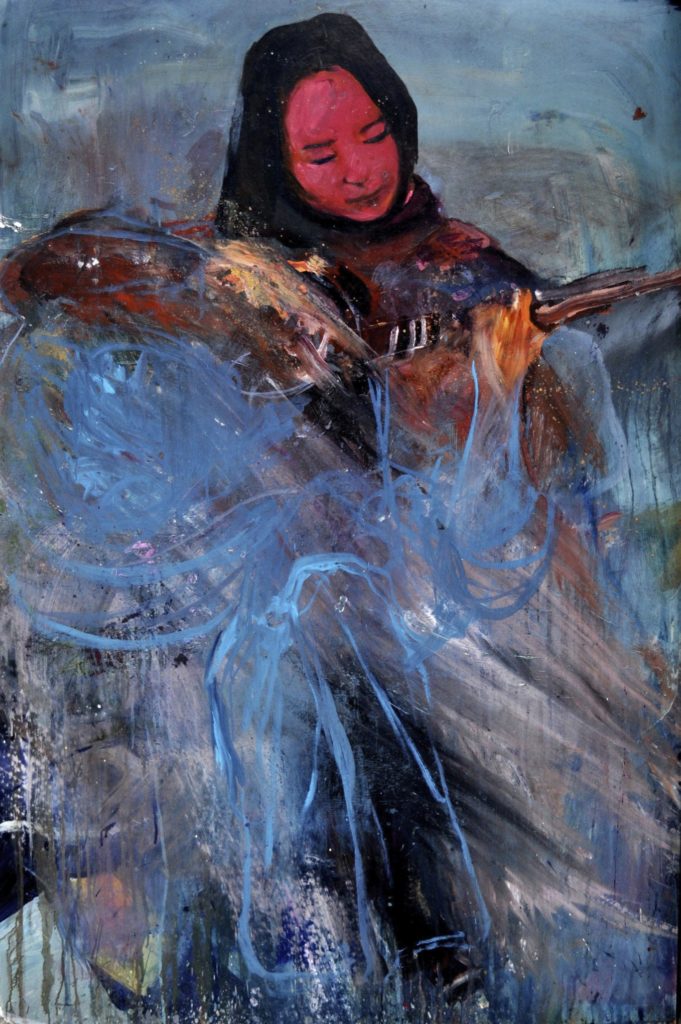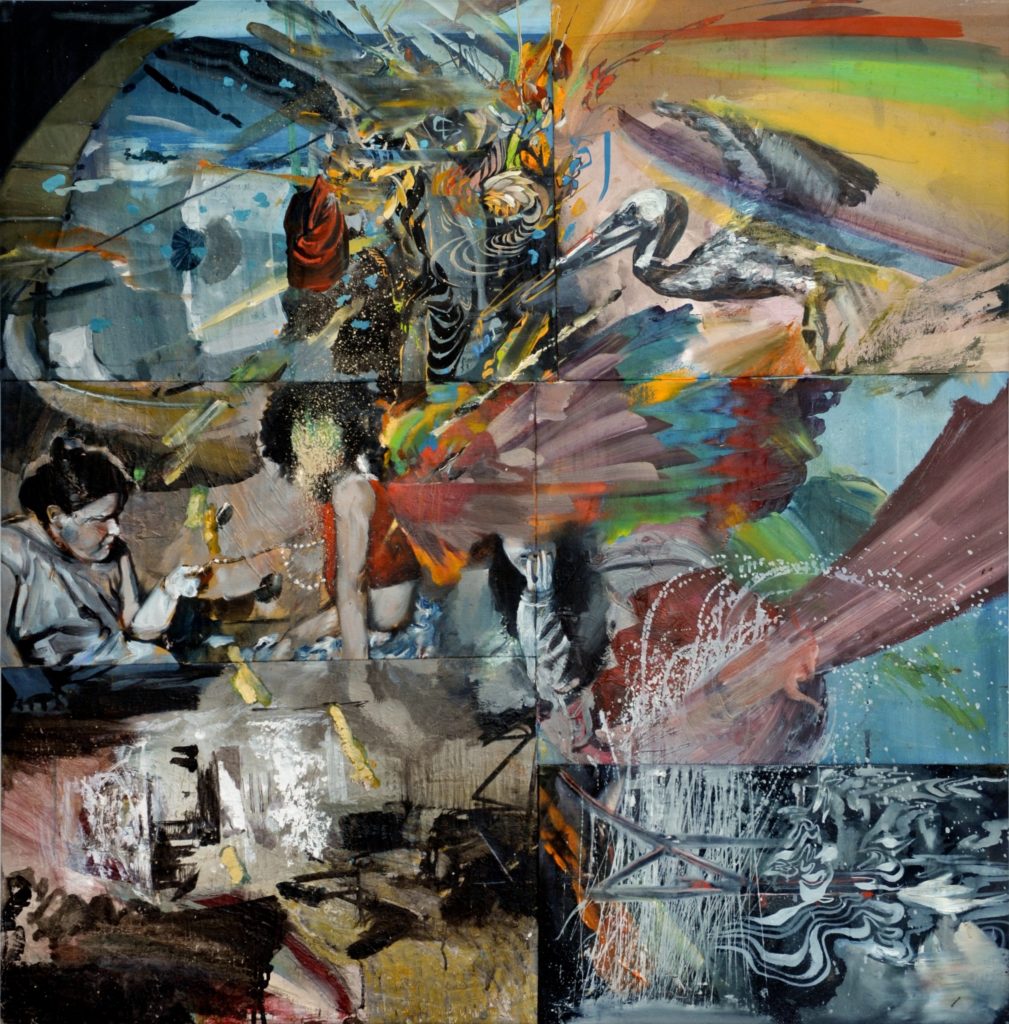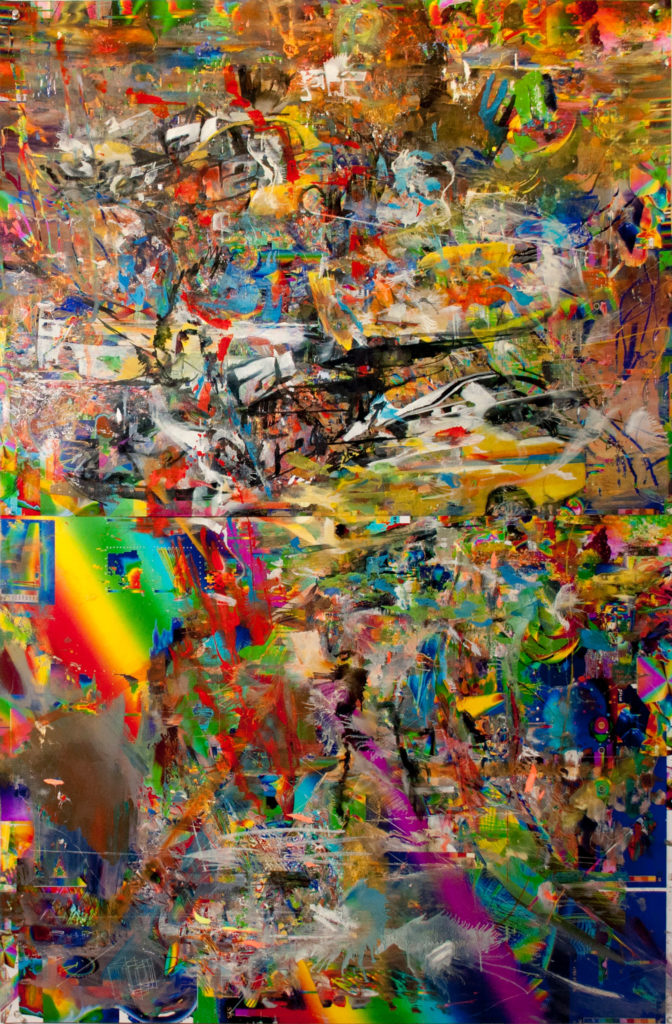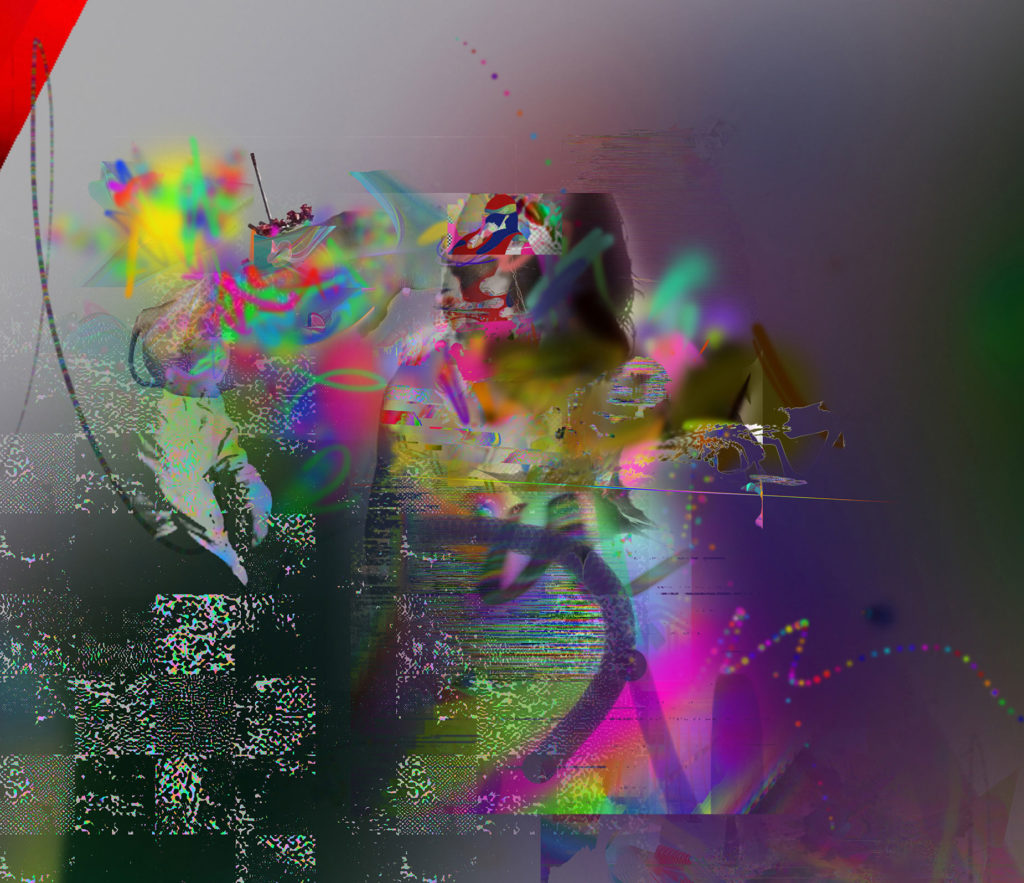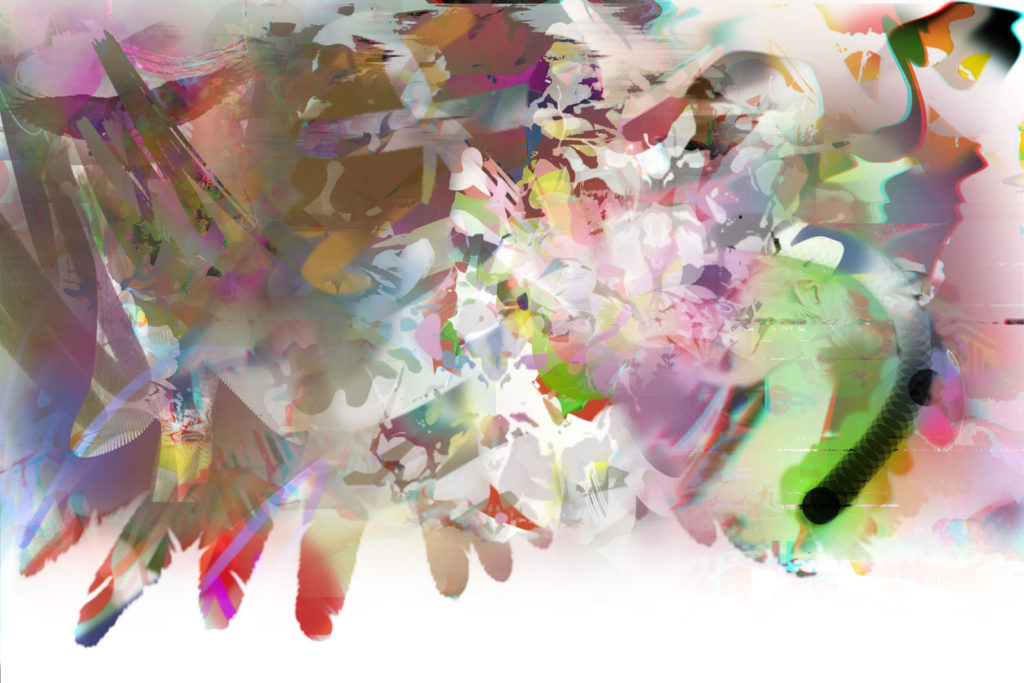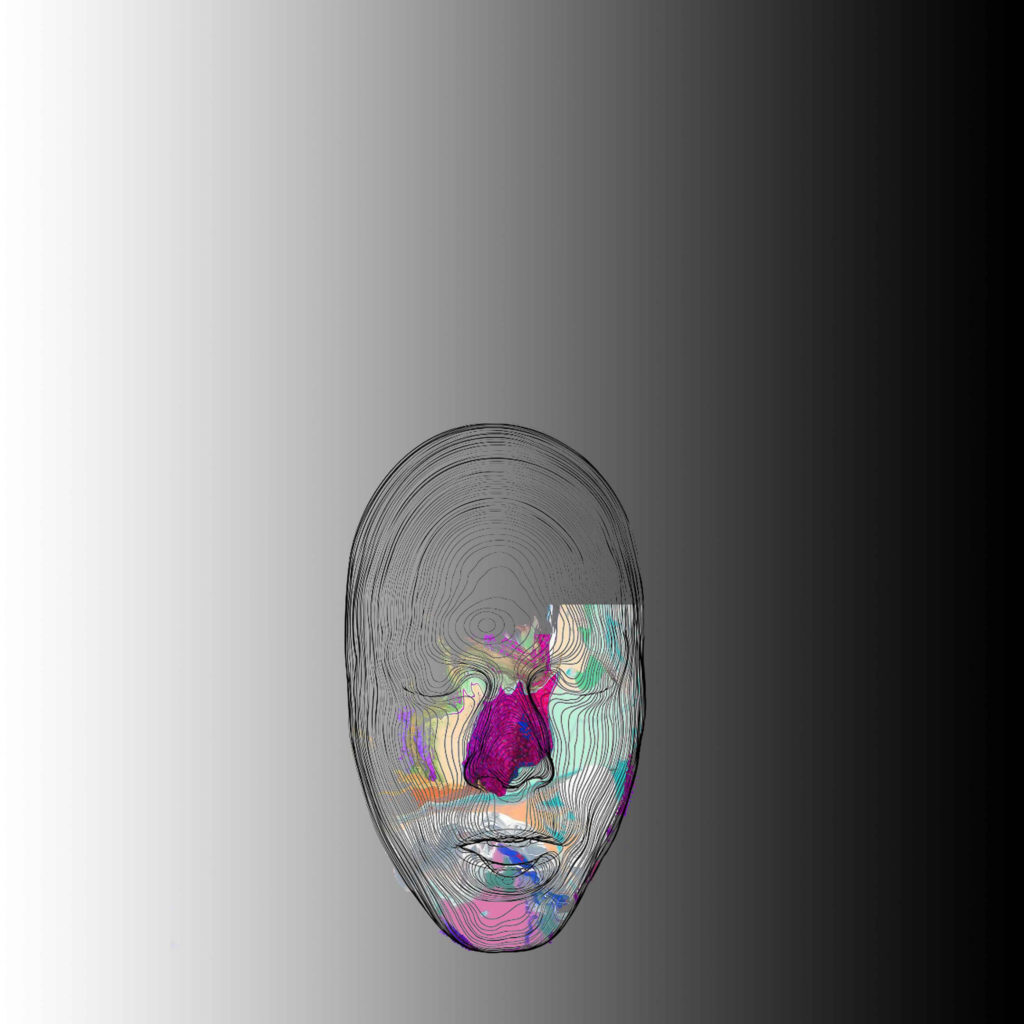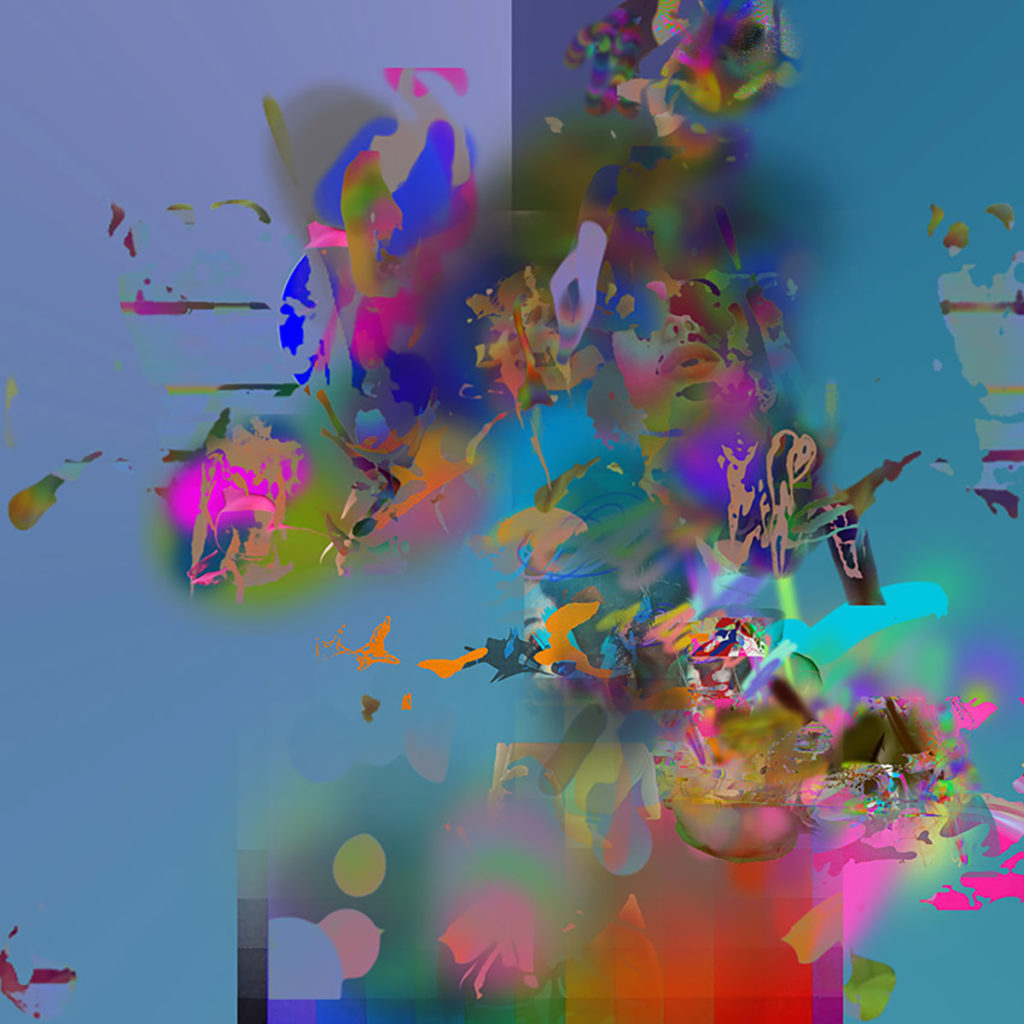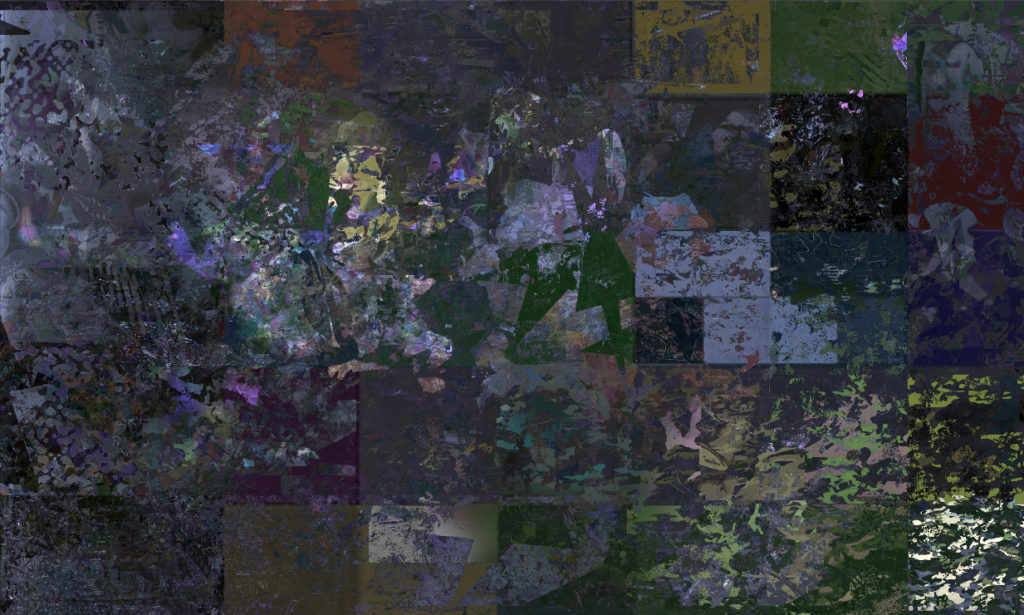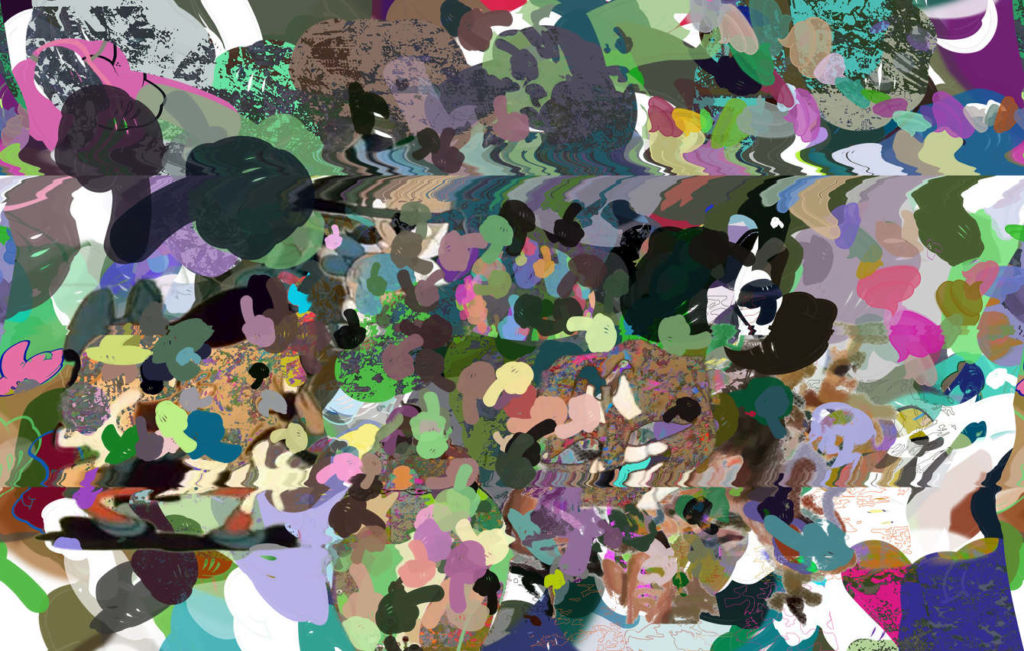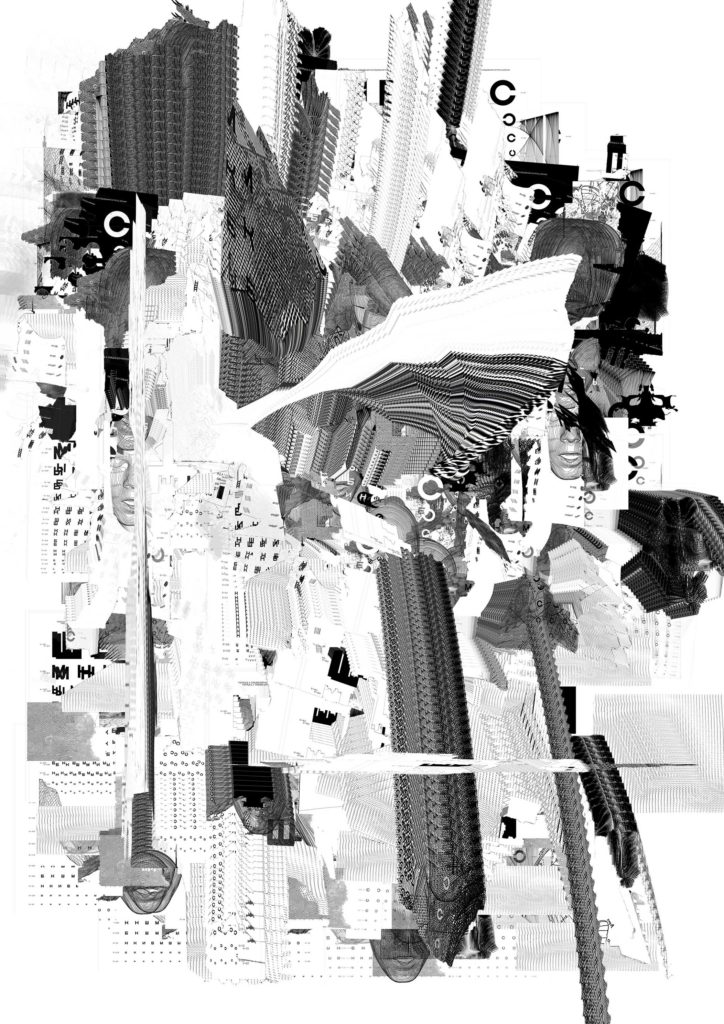Версия на русском ниже / English below / traduzione in fondo alla pagina
Virtuelle Ausstellung von Ivan Grebenschikov
Gedächtnis als Kunst // Kunst als Gedächtnis
Einleitungswort des Künstlers
Wie man schon an meinem Namen, Ivan Grebenschikov, sehen kann, ich wurde in der ehemaligen Sowjetunion (in der Stadt Karaganda in Kasachstan, genauer gesagt) geboren und lebte die ersten 12 Jahre meines Lebens in St. Petersburg, bevor ich 1995 mit meiner Familie nach Tessin umzog. Momentan schreibe ich in meiner Muttersprache* und pflege auch jetzt (und mit zunehmender Intensität gar) die Verbindung zu meiner Heimat.
Also, warum Kunst? Fangen wir mit dem state of art an, mit dem aktuellen Stand der Dinge der “Kunstwissenschaft”. Oder vielmehr mit der Vorstellung von Kunst als sensorisches und «emotionales”/mentales Objekt, also als Objekt der Perzeption.
Im alltäglichen Erleben bleiben alle Objekte des Wahrnehmungsprozesses letzten Endes nur sie selbst. Das heißt, sowohl ein «Baum”, z. B., als auch das «Schwarze Quadrat”**, als Wahrnehmungsobjekte, für den «zerebralen Sinnesapparat”, sind dieselbe «Baum» und «Schwarzes Quadrat”: auf der Ebene des elektrochemischen Prozesses findet eine Art «Translation» statt, die von den Eindrücken der Sinne ausgeht und vom Gehirn in eine Art «neurosensorisches Äquivalent» dieser Objekte umgewandelt wird.
Gleichzeitig kann der Begriff der Perzeption nicht auf den Begriff eines trivialen Informationsrekorders reduziert werden – irgendeine Art biologisches „Audio-“ oder „Videorekorders“ – da die Wahrnehmung naturgemäß auch an tieferen Prozessen beteiligt ist, auf neuronaler und metabolischer Ebene, wo der Körper mit der Umgebung interagiert und auf die direkteste Weise darauf reagiert.
Und es ist hier, dass wir, unter Berücksichtigung dieser Tatsache aus einem anthropologischen Ansichtspunkt, behaupten können, dass als chromatische Derivate, unser «Baum» und «Schwarzes Quadrat», in der Wahrnehmungserfahrung, rein subjektive Begriffe sind, autonome Phänomene, die in keinem Zusammenhang mit der Bedeutung stehen, die diesen Definitionen in einem verbalen Kontext zugeordnet ist, d. h. sie sollten, in diesem Sinne, in einem reduktionistischen Kontext betrachtet werden, als Gegensatz zu ihrem holistischen Korrespondenten realer Objekte .
Darüber hinaus beeinflusst die Wahrnehmung, auf der Ebene der Grosshirnrinde, direkt die Dynamik der Neuroplastizität, die wiederum direkt die psychosomatischen Prozesse im Körper bestimmt. Die Anwendung dieser Prinzipien in der medizinischen Praxis, indessen, nennt man rezeptive Kunsttherapie.
Um nun die Konsequenzen eines solchen Ansatzes zu verstehen, nämlich der Fokussierung auf die Wahrnehmungsqualitäten, mehr als schlicht auf die Beteiligung dieser am kreativen Prozess, nehmen wir das Beispiel des kulturellen Kontexts.
Sein Grundprinzip, die Kommunikation, wird in ihrer konventionellen Ausdehnung zur Manifestation des Gedächtnisses. Kein Gedächtnis aber, das sich in einer Art «verfestigtem» Zustand befindet, kein «analytisches” Gedächtnis, das sich uns als eine Art abstrakte und immaterielle Einheit vorstellt – eine Einheit, die in die Ewigkeit projiziert wird: von der Vergangenheit in die Zukunft; und nicht das Gedächtnis in dem Sinne, wie es von der Moderne interpretiert wird: das heisst als eine Art von Elementen, die bestimmte Einheiten von „Erinnerungen“ oder „Zeugnissen“ ausmachen. Gedächtnis im Schlüssel des Wahrnehmungsparadigmas ist ein Gedächtnis, das eng mit den Gesetzen der (Un-)Fähigkeit des Subjekts verbunden ist, Informationen aufzuzeichnen. Das heisst, mit bestimmten elementaren physikalischen Prinzipien der Erhaltung und des Verlustes einiger Daten über die Realität. Das Gedächtnis ist für das Wahrnehmungsparadigma, mit anderen Worten, die Fähigkeit, zu erinnern, genauso wie die Kunst, für dieses Paradigma, die Fähigkeit ist, wahrzunehmen.
Die vorgestellten Arbeiten sind das Ergebnis eines Versuchs, die Frage zu beantworten, wie genau dieses Wissen angewendet werden kann und auf welcher Grundlage diese Prozesse ablaufen. Insbesondere habe ich in dieser Arbeit die Ideen der Gestaltpsychologie verwendet, um Konzepte im Zusammenhang mit der Kunsttherapie zu analysieren.
Ich muss jedoch sofort warnen, dass diese Arbeit durch keine konkrete Anwendungsbeispiele der Ergebnisse meiner Schlussfolgerungen in der Praxis gestützt wird, und damit durch keinen unwiderlegbaren Beweis für die Richtigkeit meiner Argumente auch, aber dennoch in diesem Prozess konnte ich, für mich, solche Begriffe definieren, wie «Wahrnehmungsergonomie» und «Wahrnehmungsergotherapie”, als Schlüsselbegriffe in dieser Richtung, und die Frage nach den Farbqualitäten als die am besten geeignete Methode, um mit ihnen zu arbeiten. In ihrer ursprünglichen Idee, mussten die Werke als Proben für Eye-Tracking-Experimente dienen (die Untersuchung von Mikrobewegungen des Auges), aber auch einfach als Feld für die Aufzeichnung einiger Schlussfolgerungen im Prozess des Denkens. (Die aktuelle Arbeit befasst sich in der Tat weiter: mit den Eigenschaften des Subjekts in der Kultur und der Wahrnehmung eines bestimmten Beobachters.)
Dies ist das Ergebnis der Analyse verschiedener Konzepte von optischer Kunst, Pareidolie, Synchronizität, Abstraktion, Ästhetik, Semantik, generativen und prozeduralen Prozessen usw. Es liegt jedoch absolut außerhalb meiner Ambitionen, in dieser Richtung umfassende Antworten geben zu wollen. Es handelt sich vielmehr um eine Sammlung von Fragen, deren Stellen mir wichtig erschien. Ich hoffe, in diesem Sinne, dass auch der/die Zuschauer(-in)/Leser(-in) etwas Interessantes für sich finden kann!
* Der Originaltext wurde in russischer Sprache verfasst. Wobei auch Italienisch, neben dem Russischen, eine Muttersprache von mir ist.
** Es wird hier auf das bekannte konzeptuelle Werk von Kasimir Malewitsch Bezug genommen, als eine einfache formale Geometrie, um eigene «gemeinsame» Eigenschaften gebracht, zugunsten der intellektuellen Aneignung von Signifikanz.
Виртуальная выставка Ивана Гребенщикова
Память как искусство // Искусство как память
Вступительное слово художника
Как уже свидетельствует мое имя, Иван Гребенщиков, я родился в экс-СССР (в городе Караганда, в Казахстане, для точности), прожил первые 12 лет своей жизни в Санкт-Петербурге, перед тем как переехать в 1995-ом с семьей в Тичино; пишу в данный момент на родном для меня языке и и сейчас поддерживаю (с растущей к тому же интенсивностью) связи с моей родиной.
Итак, почему искусство? Начнем со state of the art, с современного состояния дел в науке искусства. А точнее с идеи искусства как предмета восприятия чувствами и «эмоциями»/разумом, как предмета перцепции, следовательно.
В повседневном опыте перцепции все предметы процесса восприятия, в конечном итоге остаются самими собою. То есть, к примеру, что «дерево», чтобы привести пример, что «Черный квадрат»*, в качестве предметов восприятия, для «сенсорно-мозгового» аппарата, — это те же самые «дерево» и «Черный квадрат»: на электрохимическом уровне происходит своего рода «перевод» из получаемых чувствами и обрабатываемых мозгом впечатлений в эдакий «нейросенсорный эквивалент» этих предметов.
В то же время, понятие самой перцепции нельзя редуцировать в форму банального регистратора информации — некоего биологического «магнитофона» или «фотоаппарата» — по той причине, что перцепция, в силу своей природы, соучаствует также и в более глубоких процессах, на нейронном и метаболическом уровнях, где организм взаимодействует с окружающей средой непосредственно реагируя на нее.
И вот если рассматривать этот факт с антропологической точки зрения, мы можем утверждать, что в качестве производных цвета, «дерево» и «Черный квадрат», в опыте перцепции, – это сугубо субъективные понятия, авотономные феномены, никоим образом не связанные со значением, приписанным этим определениям в контексте вербальности. В этом смысле, то есть, они должны рассматриваться в редукционистском контексте, в противопоставление их холистического эквивалента реального мира.
Кроме того, на уровне коры головного мозга, перцепция непосредственно влияет на динамику нейропластичности, которая в свою очередь прямо обуславливает психосоматические процессы в организме. Использование же этих принципов в медицинской практике называется рецептивной арт-терапией.
Так вот, чтобы понять последствия подобного подхода — то есть фокусирования на качествах перцепции, нежели на сущем факте ее участия в творческом процессе, — рассмотрим пример культурного контекста.
Его основывающий принцип, коммуникация, в своем условном расширении, становится манифестацией памяти. Памяти, однако, не в каком-то «затверделом» состоянии, не «аналитической» памяти, которая бы представлялась как некое подобие абстрактной и нематериальной единицы, спроецированной в вечность — из прошлого в будущее; и, то есть, не памяти в том смысле, как ее интерпретирует современность: то есть как какое-то любое множество элементов, представляющих собой некие единицы “воспоминания” или «свидетельства». Память в ключе перцептивной парадигмы тесно связана с законами (не)способности фиксации информации со стороны субъекта. То есть конкретные элементарные физические принципы сохранения и потери тех или иных данных о реальности. Память, для перцептивной парадигмы, это, другими словами, способность запоминать, в той же степени, в какой искусство, для этой парадигмы — способность воспринимать.
Представленные работы — это результат попытки ответить на вопрос, каким именно образом мы можем применить эти знания и какими принципами эти процессы руководствуются. Более специфически, в этой работе, я использую идеи гештальтпсихологии в качестве средств для исследования понятий связанных с арт-терапией.
Сразу же, однако, должен оговориться, что эта работа не подкреплена конкретными примерами применения результатов моих заключений на практике, а значит и неоспоримыми доказательствами существенности моих доводов, но тем не менее, в её процессе я смог определить, для себя, такие понятия как «перцептивная эргономика» и «эрготерапия восприятия», как одним из ключевых в этом направлении, и вопрос световых качеств цвета, как наиболее подходящий метод для работы с ними. Сами же произведения должны были, в их изначальной задумке, служить как образцы для экспериментов с eye-tracking (исследование микро-движений глаз), но также и просто как поле для фиксирования тех или иных заключений в процессе рассуждения. (Актуальная работа, по факту, обращается далее, к свойствам сюжета в культуре и восприятии конкретного наблюдателя.)
Это итог анализа различных понятий оптического искусства, парейдолии, синхроничности, абстракции, эстетики, семантики, генеративного и процедурального процессов и т.д. Но совершенно вне моей амбиции предоставить какие-то исчерпывающие ответы в этом направлении. Это скорее коллекция вопросов, которые, мне казалось, важно поставить. В этом смысле, я надеюсь, что и зритель/читатель сможет найти в них что-нибудь интересное для себя!
*Имеется ввиду известное концептуальное произведение Казимира Малевича, как простой формальной геометрии лишенной своих «общих» качеств в пользу интеллектуального присвоения содержательности.
Virtual exhibition by Ivan Grebenshikov
Memory as art // Art as memory
Introductory word of the artist
As one can see already from my name, Ivan Grebenshikov, I was born in the former Soviet Union (in the city of Karaganda, in Kazakhstan, to be precise), I lived the first 12 years of my life in St. Petersburg, before moving to Ticino in 1995 with my family. Right now I’m writing in my native language*, and even now I maintain (and with increasing intensity also) the bond with my homeland.
So why art? Let’s start with the “state of art”, the current state of the art science. Or rather, from the idea of art as a sensory and «emotional»/mental object, as an object of perception, therefore.
In everyday experience, all the objects of the process of perception at the end of the day remain only themselves. That is, both a «tree», for example, and the “Black square»**, as objects of perception, for the «cerebral-sensory» apparatus, are the same «tree» and “Black square»: at the level of the electrochemical process, a sort of «translation» takes place, from the impressions received by the senses and transformed by the brain into a sort of a “neurosensorial equivalent» of these objects.
At the same time, the very concept of perception cannot be reduced to the notion of a trivial information recorder – some sort of a biological “audio” or «video recorder» – because perception, by its very nature, also participates in deeper processes, at neural and metabolic levels, where the body interacts with the environment reacting to it in the most direct way.
And it is here that, with the consideration of this fact from an anthropological point of view, we can affirm that, being, on a perceptive level, chromatic derivatives, our «tree» and «Black square», in the experience of perception, they are purely subjective concepts, autonomous phenomena, not at all associated with the meaning assigned to these definitions in a verbal context, i.e. they should be contemplated, in this sense, in a reductionist context, as an opposition to their holist correspondent of real objects.
Furthermore, at the level of the cerebral cortex, perception directly influences the dynamics of neuroplasticity, which in turn directly determines the psychosomatic processes in the body. The use of these principles in medical practice, meanwhile, is called receptive art therapy.
Now, in order to understand the consequences of such an approach, namely of the focus on the qualities of perception, rather than just the fact of its participation in the creative process, we are going to take the example of the cultural context.
Its founding principle, communication, in its conventional extension, becomes a manifestation of memory. Not memory, however, that is in a sort of «solidified» state, not an «analytical» memory, which would present itself as this kind of abstract and intangible unity – an entity projected into eternity: from the past to the future; and not memory, therefore, in that sense in which it is interpreted by modernity: that is, as a sort of any set of elements that constitute certain units of “remembrances” or «testimonies». Memory in the key of the perceptive paradigm is a memory closely connected with the laws of the (in)ability of the subject to record information. That is, with specific elementary physical principles of conservation and loss of some data on reality. Memory, for the perceptive paradigm, is, in other words, the ability to memorize, as well as art, for this paradigm is the ability to perceive.
The works presented are the result of an attempt to answer the question of how exactly we can apply this knowledge and on the basis of what principles these processes are based. More specifically, in this work I used the ideas of Gestalt psychology as a means to analyze concepts related to art therapy.
However, I must straight away warn that this work is not supported by concrete examples of the application of the results of my conclusions in practice, and therefore by irrefutable proof of the validity of my arguments, but nevertheless, in this process I was able to define, for myself, concepts such as » perceptual ergonomics» and «perception ergotherapy”, as key concepts in this direction, and the question of color qualities, as the most appropriate method to work with them. In their original idea, the works themselves had to act as samples for eye-tracking experiments (the study of micro-movements of the eye), but also simply as a field for recording some conclusions in the process of reasoning. (Current work, in fact, addresses itself further: to the properties of the subject in the culture and perception of a particular observer.)
This is the result of the analysis of various concepts of optical art, pareidolia, synchronicity, abstraction, aesthetics, semantics, generative and procedural processes, etc. But it is absolutely beyond my ambition to want to provide exhaustive answers in this direction. Rather, it is a collection of questions that, it seemed to me, is important to ask. I hope, in this sense, that even the spectator/reader can find something interesting for himself!
* The original text was written in Russian. Although both Italian and Russian are my mother tongue.
** Here it’s being referred to the well-known conceptual work by Kazimir Malevich, meant as a simple formal geometry, deprived of its «common» qualities in favor of the intellectual appropriation of significance.
Mostra virtuale di Ivan Grebenschikov
Memoria come arte // Arte come memoria
Parola introduttiva dell’artista
Come già si può capire dal mio nome, Ivan Grebenscikov, sono nato nell’ex Unione Sovietica (nella città di Karaganda, in Kazakistan, per precisione), ho vissuto i primi 12 anni della mia vita a San Pietroburgo, prima di trasferirmi al Ticino nel 1995 con la mia famiglia. In questo momento sto scrivendo nella mia lingua madre*, e anche ora mantengo (e con crescente intensità inoltre) il legame con la mia patria.
Dunque, perché arte? Cominciamo dallo state of art, lo stato attuale della scienza dell’arte. O meglio, dall’idea dell’arte come oggetto sensoriale ed «emozionale”/mentale, come oggetto della percezione, quindi.
Nell’esperienza quotidiana, tutti gli oggetti del processo della percezione alla fine dei conti rimangono solo se stessi. Cioè, sia un “albero”, per fare un esempio, che il «Quadrato nero»**, in quanto oggetti della percezione, per l’apparato “cerebro-sensoriale», sono gli stessi «albero» e «Quadrato nero»: a livello del processo elettrochimico ha luogo una sorta di «traduzione”, dalle impressioni ricevute dai sensi e trasformate dal cervello in una sorta di un ”equivalente neurosensoriale» di questi oggetti.
Allo stesso tempo, il concetto stesso di percezione non può venire ridotto alla nozione di un banale registratore di informazioni – una qualche sorta di “audio-“ o «videoregistratore” biologico – perché la percezione, per sua stessa natura, partecipa anche a processi più profondi, a livelli neurali e metabolici, dove il corpo interagisce con l’ambiente reagendo ad esso nella maniera più diretta.
Ed è qui che, con la considerazione di questo fatto da un punto di vista antropologico, possiamo affermare che, in qualità, a livello percettivo, di derivati cromatici, i nostri “albero» e «Quadrato nero», nell’esperienza della percezione, sono concetti puramente soggettivi, fenomeni autonomi, nient’affatto associati al significato assegnato a queste definizioni in un contesto verbale. Andrebbero cioè contemplate, in questo senso, in un contesto riduzionista, come opposizione al loro corrispettivo olista degli oggetti reali.
Inoltre, a livello della corteccia cerebrale, la percezione influenza direttamente la dinamica della neuroplasticità, che a sua volta determina direttamente i processi psicosomatici nel corpo. L’uso di questi principi nella pratica medica, invece, è chiamato arteterapia ricettiva.
Ora, per comprendere le conseguenze di un tale approccio, vale a dire del concentrarsi sulle qualità della percezione, più che sul mero fatto della sua partecipazione nel processo creativo, prendiamo l’esempio del contesto culturale.
Il suo principio fondante, la comunicazione, nella sua estensione convenzionale, diventa una manifestazione della memoria. Non memoria, tuttavia, che si trovi in una sorta di stato “solidificato”, non una memoria «analitica», la quale si presenterebbe come questa specie di unità astratta e intangibile – un’entità proiettata nell’eternità: dal passato al futuro; e non memoria, quindi, in quel senso in cui essa viene interpretata dalla modernità: cioè come una sorta di qualsiasi insieme di elementi che costituiscono determinate unità di “ricordi” o “testimonianze”. La memoria nella chiave del paradigma percettivo è una memoria strettamente connessa con le leggi della (in)capacità del soggetto di registrare informazioni. Cioè, con specifici elementari principi fisici della conservazione e della perdita di alcuni dati sulla realtà. La memoria, per il paradigma percettivo, è, in altre parole, la capacità di memorizzare, così come l’arte, per questo paradigma è la capacità di percepire.
Le opere presentate sono il risultato di un tentativo di rispondere alla domanda su come esattamente possiamo applicare questa conoscenza e sulla base di quali principi questi processi si fondino. Più specificamente, in questo lavoro ho utilizzato le idee della psicologia della Gestalt in quanto mezzo mezzo per analizzare concetti relativi all’arteterapia.
Devo tuttavia subito avvisare che questo lavoro non è sostenuto da esempi concreti dell’applicazione dei risultati delle mie conclusioni nella pratica, e quindi da prove inconfutabili della fondatezza dei miei argomenti, ma ciononostante, in questo processo ho potuto definire, per me stesso, concetti come «ergonomia percettiva» ed «ergoterapia della percezione”, in quanto concetti chiavi in questa direzione, e la questione delle qualità del colore, in quanto il metodo più appropriato per lavorare con essi. Le opere stesse dovevano, nella loro idea originale, fungere da campioni per esperimenti di eye-tracking (lo studio dei micro-movimenti oculari), ma anche semplicemente come un campo per la registrazione di alcune conclusioni nel processo di ragionamento. (Il lavoro attuale, infatti, si rivolge più in là: alle proprietà del soggetto nella cultura e nella percezione di un particolare osservatore.)
Questo è il risultato dell’analisi di vari concetti di arte ottica, pareidolia, sincronicità, astrazione, estetica, semantica, processi generativi e procedurali, ecc. Ma è assolutamente al di là della mia ambizione voler fornire risposte esaustive in questa direzione. Si tratta piuttosto di una raccolta di domande che, mi è sembrato, è importante porre. Mi auguro, in questo senso, che anche lo spettatore/lettore possa trovarvici qualcosa di interessante per sè stesso!
*Il testo originale è stato scritto in russo. Sebbene entrambi italiano e russo siano mie lingue madri.
** Qua ci si riferisce al noto lavoro concettuale di Kazimir Malevich, in quanto una semplice geometria formale, privata delle proprie qualità «comuni» a favore dell’appropriazione intellettuale della significatività.

